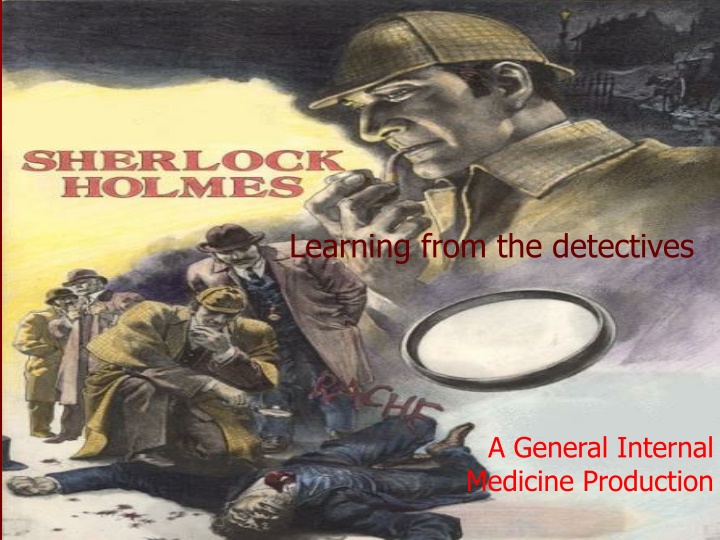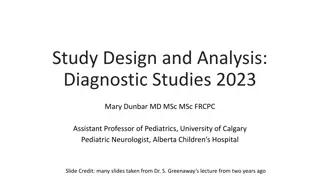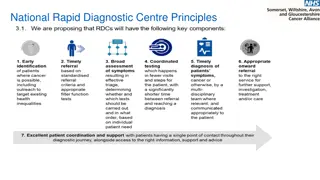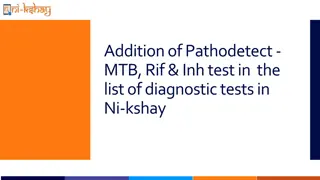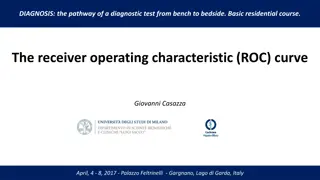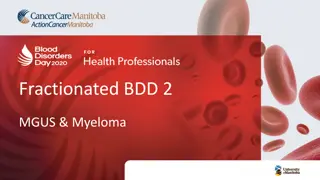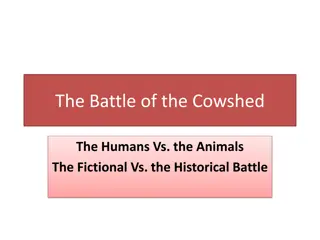Learning from Fictional Detectives for Better Diagnostic Skills
Explore the application of lessons from fictional detectives like Sherlock Holmes to enhance diagnostic processes in medicine. Delve into problem representation, observation, deduction, and clinical reasoning strategies to improve diagnostic accuracy and patient care.
Download Presentation

Please find below an Image/Link to download the presentation.
The content on the website is provided AS IS for your information and personal use only. It may not be sold, licensed, or shared on other websites without obtaining consent from the author.If you encounter any issues during the download, it is possible that the publisher has removed the file from their server.
You are allowed to download the files provided on this website for personal or commercial use, subject to the condition that they are used lawfully. All files are the property of their respective owners.
The content on the website is provided AS IS for your information and personal use only. It may not be sold, licensed, or shared on other websites without obtaining consent from the author.
E N D
Presentation Transcript
Learning from the detectives A General Internal Medicine Production
Goals Apply lessons learned from fictional detectives to the diagnostic process What did they say, and how can we use that to become better diagnosticians
"The problem with putting two and two together is that sometimes you get four, and sometimes you get twenty-two." Dashiell Hammett (The Thin Man)
Classic Sherlock Observation Deduction type 2 thinking
Patient #1 the story 55 year old man brought to the ED for confusion Wife states that he became progressively confused over 2 days His blood glucose measured > 800 No acidosis, normal anion gap Admitted to ICU
Further history Patient s VA records from California (he had just moved to Birmingham) documented type 2 DM He was prescribed 24 units long acting insulin with 5 units short acting with each meal He told the ICU physicians that he only took 12 units daily & morning 5 units
ICU course Urine drug screen + for cocaine Blood glucose decreased rapidly 2 episodes of hypoglycemia HgbA1c > 14 Then transferred to the floor
Problem Representation early step is the creation of the mental abstraction or problem representation usually as a one- sentence summary defining the specific case in abstract terms Bowen, Judith L. "Educational strategies to promote clinical diagnostic reasoning." New England Journal of Medicine 355.21 (2006): 2217-2225.
Initial problem representation 55 year old man, cocaine positive, poor diabetes control, poorly adherent admitted with hyperosmolar state
Implications Several factors in this problem representation might influence our thought process The patient has a diagnosis of Type II DM He does not adhere to recommended treatment He uses illegal substances Thus, we have several potential reasons for his markedly elevated blood sugar
Problem Representation #2 On discharge from the ICU to the floor: 55 year old man, with brittle diabetes, cocaine positive
IMPLICATIONS OF PROBLEM Representation #2 Brittle diabetes raises some interesting questions We wonder: Why is the patient with Type II DM on insulin and no oral agents? Why does he so easily develop hypoglycemia? (old VA records confirm)
Morning Rounds at the bedside The patient is very thin BMI 13 He has had diabetes for 6 years He thinks he took metformin at one time No evidence of infection or CAD
Problem representation #3 Very thin man with brittle type II diabetes for 6 years
Implications of problem representation #3 When we try to match this problem representation against the illness script of DM Type II, we have too many features that do not fit Therefore, we decide that we need to consider other possibilities to explain his diabetes
Illness scripts Features present (or absent) to match against our problem representation Example CAP Short duration of symptoms productive cough fever, sweats &/or rigors abnormal chest exam Compatible CXR
DM Type II Illness script Usually overweight or obese Diabetes usually controlled with oral agents at 6 years Rare episodes of hypoglycemia (since patients have insulin resistance)
Our thought process Since our patient does have brittle diabetes he could have LADA (Latent autoimmune diabetes of adults) But they also develop ketoacidosis and yet with a BS of 800 he had no ketoacidosis! Given his low BMI, we considered the possibility of pancreatic diabetes
Back to the patient Not previously documented: 2 or more episodes of acute pancreatitis in the past Partial pancreatectomy (by his history) at a private hospital Steatorrhea for 6 years
Final problem representation Very thin man, with brittle diabetes for 6 years starting after a partial pancreatectomy who also has steatorrhea
Implications of final problem representation Revised diagnosis pancreatic diabetes secondary to partial pancreatectomy with both exocrine and endocrine deficiency This complicates his treatment, but perhaps pancreatic enzymes will help him
Harry Bosch by Michael Connelly
Think of Bosch Persistence Reviewing the old records looking for a missed clue Discussing with a friend
Harry Bosch I ve learned over the years that sometimes if you ask the same question more than once you get different responses. The case of the young woman with mysterious C diff diarrhea
Harry Bosch I didn t have all the answers but experience told me that they would come. The man with CAP who did not improve with antibiotics. Persistence!
Patient presentation 41-year-old Hispanic man (left Mexico 7 yrs ago) presents with 4 day h/o progressive dyspnea and fevers No previous illness Clear sputum with occasional blood streaks Feels well other than dyspnea Denies orthopnea or PND
Physical Exam T 101 P 140 BP 140/85 RR 22 O2sat 91% Decreased breath sounds on the right Heart exam tachycardia, no murmurs, rubs or gallops No peripheral edema
Routine labs CBC BMP WBC 13k 135 97 12 128 Hgb 10.4 4.1 27 0.8 8.6 Hct 31.2 Plt 325 84% N, 10% L
Diagnosis? How would you treat the patient? Do you need more information?
New attending physician Day 9 patient has had several courses of antibiotics and many tests for a variety of infections
Other clues Hgb slowly decreasing and after 10 days is less than 8 (from 10.4) Patient is expectorating blood Now has iron deficiency anemia
Bronchoscopy result Fresh RBC BAL RBC 206 million BAL WBC 14 million
Lab changes Serum creatinine had increased from 0.8 to 1.2 Looked for the urinalysis but alas Not originally obtained 180 RBC no casts
The hidden clue Bosch asks a colleague to look at a video When stumped talk with a colleague or consultant
You have a solution that you like, but you are choosing to ignore anything that you see that doesn't comply with it." from the Blind Banker Sherlock Season 1 Episode 2
The Dual Process theory of cognition In making diagnoses (really diagnostic decisions) we start with system 1 When we think that system 1 is failing, we resort to system 2 So what do we mean by system 1 and system 2
Dual process theory System 1 - Experiential Intuitive Tacit Experiential Pattern recognition Matching against illness script
Dual process theory System 2 - Analysis Analytic Deliberate Rational Careful analysis Consider a wide differential System 1 - Experiential Intuitive Tacit Experiential Pattern recognition Matching against illness script
Not Independent!!! System1 System 2
It often seems to me thats all detective work is, wiping out your false starts and beginning again.
Yes, it is very true, that. And it is just what some people will not do. They conceive a certain theory, and everything has to fit into that theory.
If one little fact will not fit it, they throw it aside. But it is always the facts that will not fit in that are significant. Agatha Christie, Death on the Nile
Discarding an admission dx 56-year-old man admitted for 4 days of progressive dyspnea Minimal cough 2 episodes of clear pink tinged sputum Denies fever, rigors, has felt chilly No upper respiratory tract symptoms Routine labs unremarkable CXR:
Two problem representations EMERGENCY DEPT 56-year-old man with progressive dyspnea and a left upper lobe infiltrate INTERNAL MEDICINE TEAM 56-year-old man with progressive dyspnea, but no purulent sputum, no fever and no rigors
Admission diagnosis Community acquired pneumonia Housestaff remained skeptical proBNP = 900 Echocardiogram order
